Pahrump Valley Solar Project
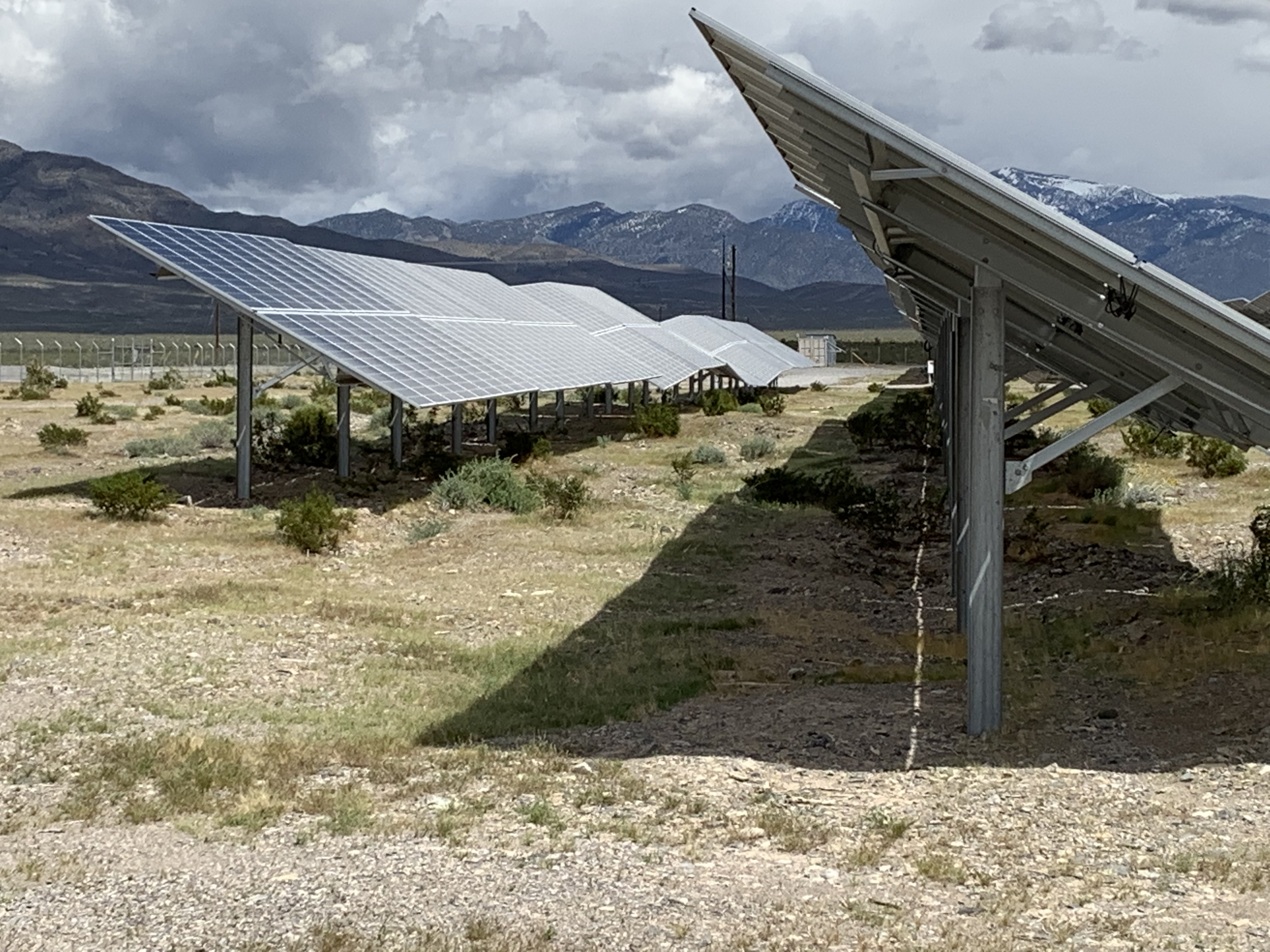
May 9, 2019 - Pahrump NV - We took a hard look at one of the utility-scale solar projects that was built as the best "state-of-the-art" "smart from the start" "environmentally friendly" and mitigated projects out there. Environmental groups worked with Valley Electric Inc., the local utility, to try to mitigate desert tortoise habitat and avian-solar mortality issues (where the photovoltaic panels imitate lakes and birds smash into them and die). Many much larger solar projects (such as the Gemini Solar Project over 7,000 acres) will be looking to try to copy these designs, in the hopes of mitigating environmental impacts.
But we are not convinced.
This is the State-of-the-Art in Mitigation?
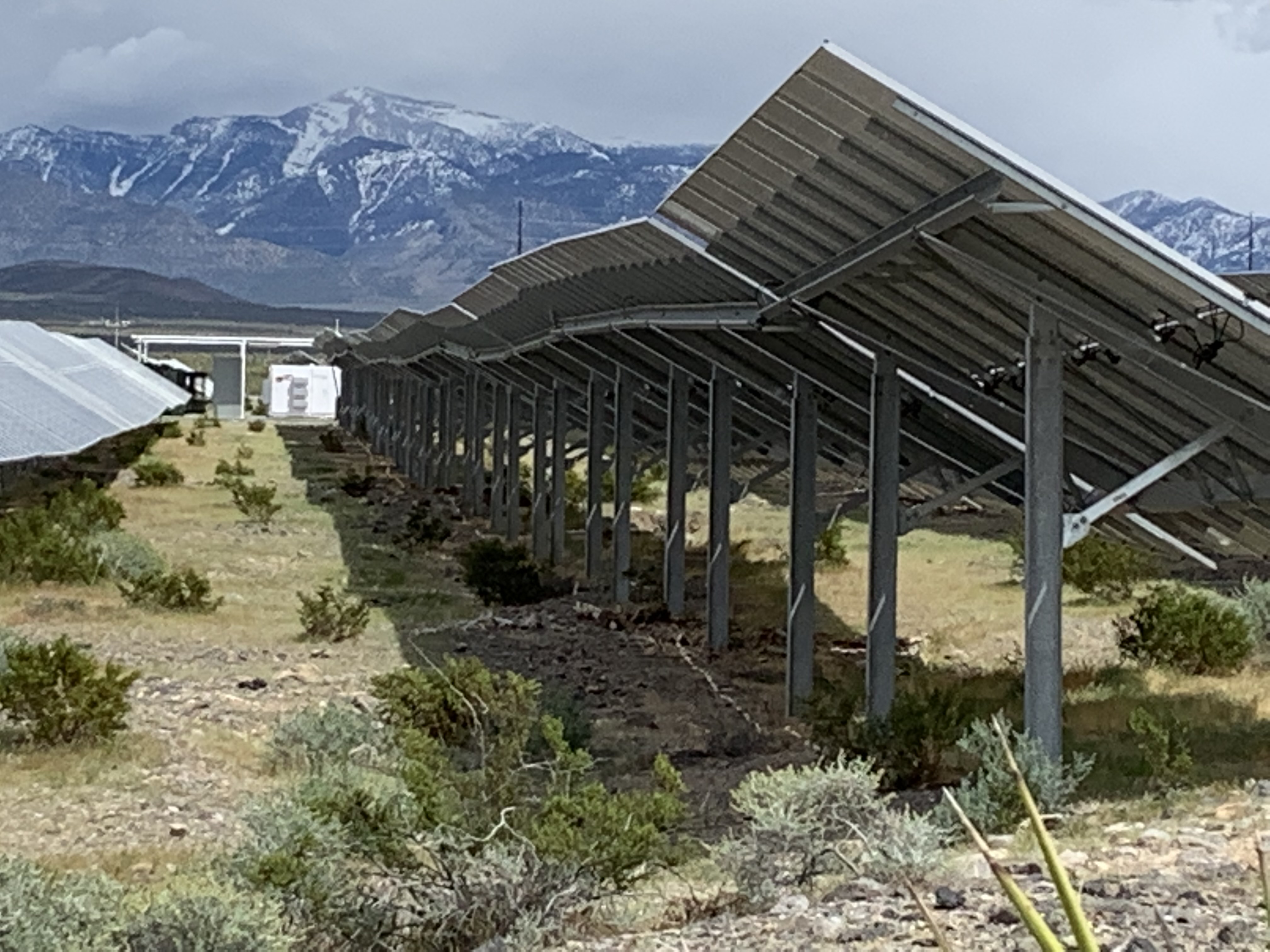
^The desert ground is unnaturally shaded and disturbed. Shrubs are mowed. Will this be a fire hazard as fuels accumulate?
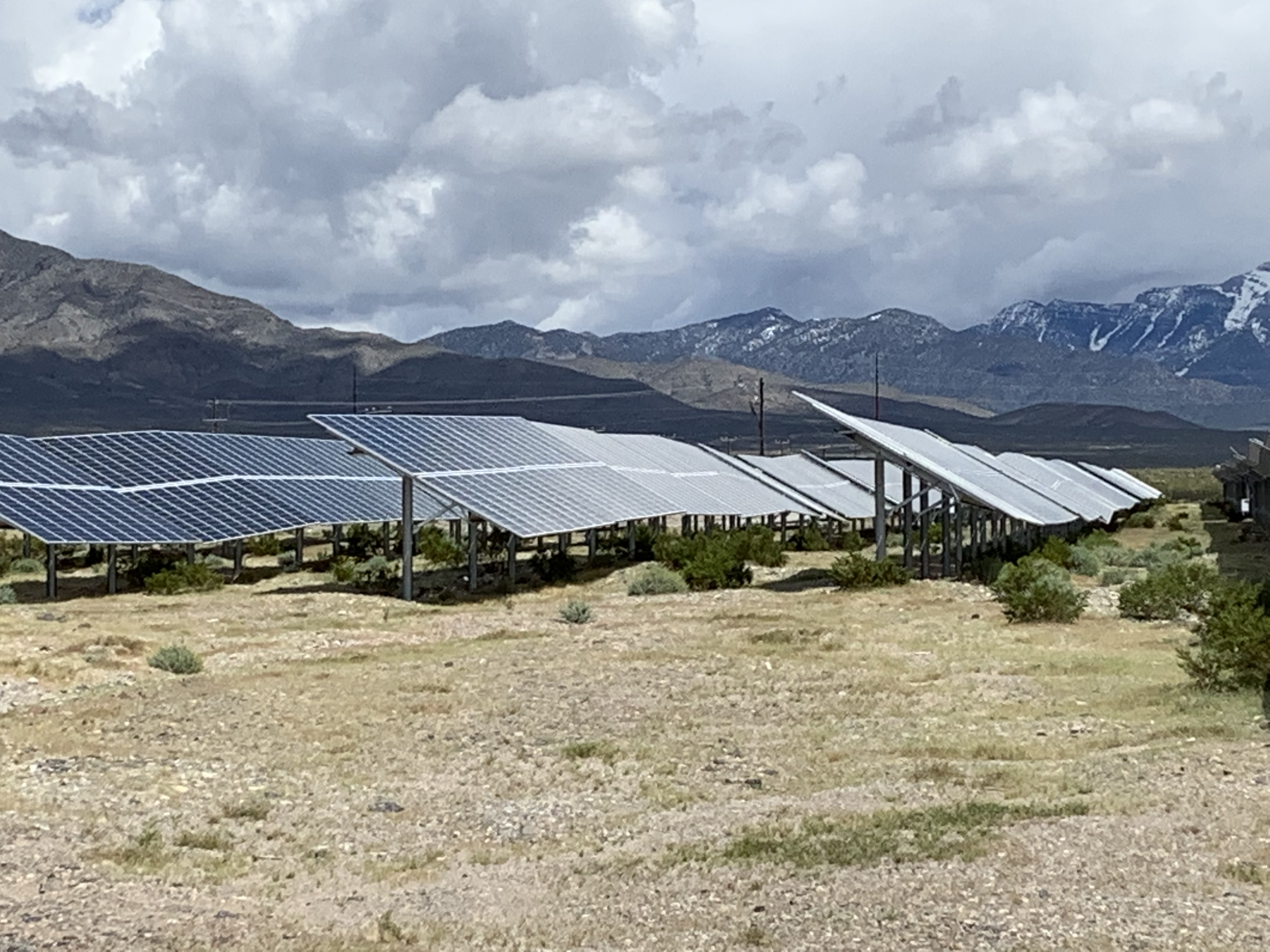
^Wavy solar panels trying to disrupt the lake-effect, to discourage waterbird attraction--but is it actually working?
The 15-megawatt photovoltaic project was sold as a "community solar" project, even though no one in the public had a choice about where it was sited or how much the energy would cost to the ratepayer.
Valley Electric and Bombard Renewable Energy of Las Vegas partnered with the U.S. Fish and Wildlife Service during construction to "minimize effects on the environmentally sensitive plants and animals in the construction zone." The land is private, so no public environmental review was conducted, although a Habitat Conservation Plan was crafted. The project consists of 54,000 photovoltaic panels and occupies over 80 acres.
The site was previously a habitat of the Mojave Desert tortoise and many Joshua trees. Valley Electric and Bombard Renewable Energy conducted a number of initiatives to mitigate the impacts on the desert tortoise.
The desert here was not graded except for the middle, allowing cresosote and other shrubs to grow, although they appeare mowed. The panel height was raised and the panels were placed farther apart, especially in the south end, to try to break up the lake-effect that attracts waterbirds.
We have yet to see data and monitoring reports on whether these design features actually work to lessen avian mortality.
Small "doors" were built into the 8-foot-tall chainlink fence (topped with barbed waire) to supposedly allow tortoises to wander in and out of their former home ranges.
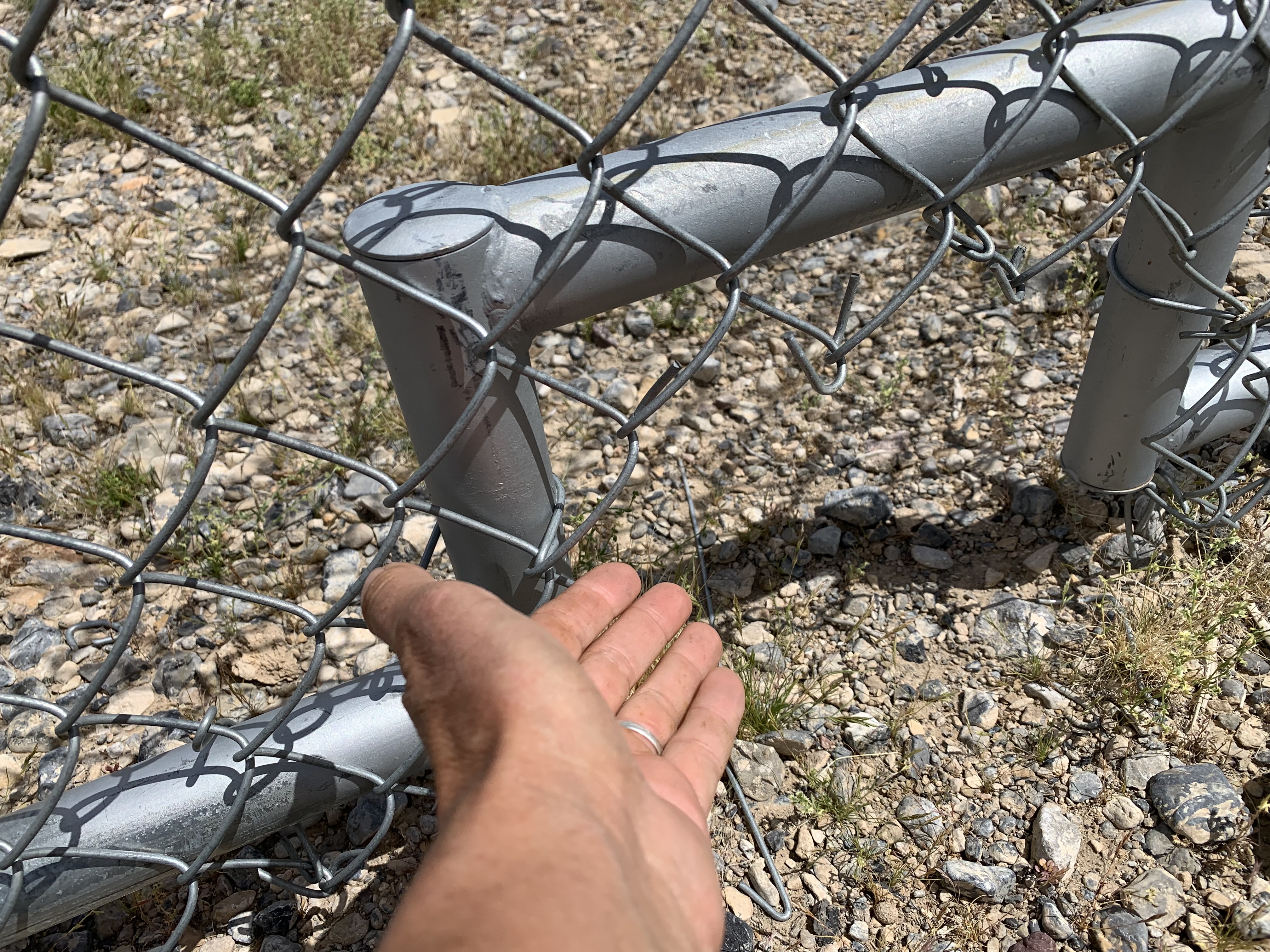
Again, we have no reports available to show whether this tactic is helping the local tortoise population, or what the use and numbers on site are. Four tortoises on the site were transmittered and monitored, and all went back into the solar site.
A gap between solar fields was left as a "connectivity corridor." We do not know if these are helping the local tortoise population.
But these mitigation measures are voluntary, and other solar developers have not agreed to do these for tortoises or birds.
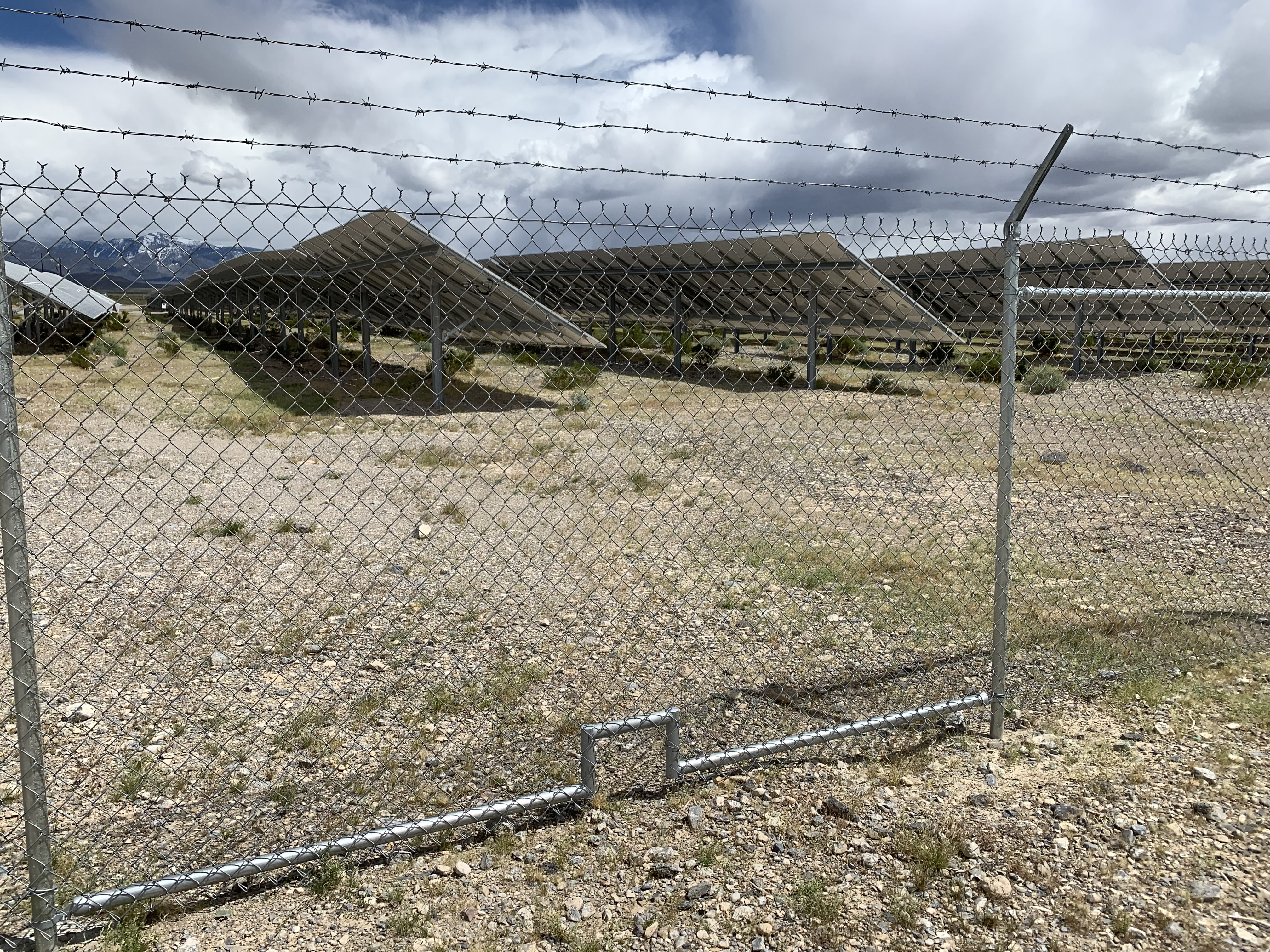
^Pahrump Solar Project with "tortoise door" in the chanilink fence. Is this really working to maintain a viable tortoise population here?
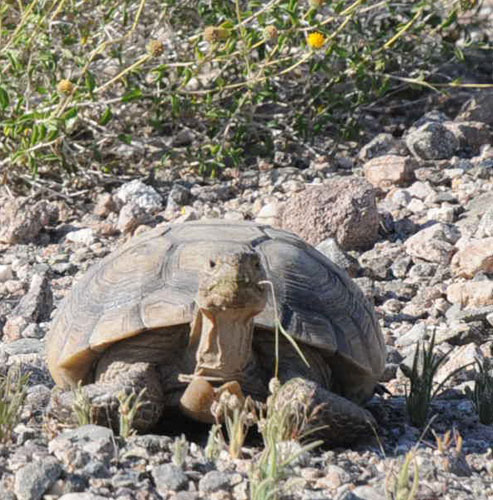
Will desert tortoises even want to use this degraded habitat?
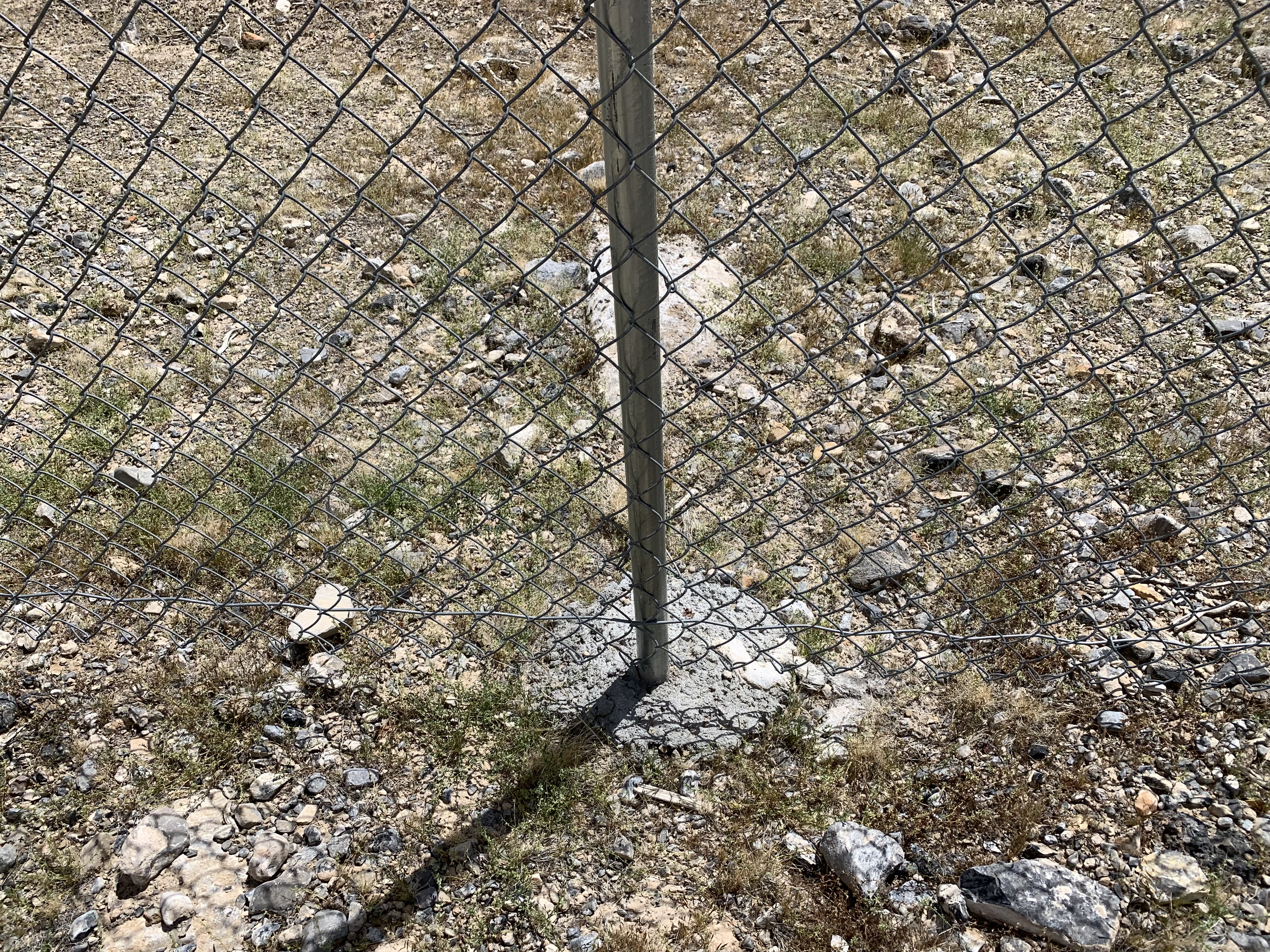
^Chainlink fence with cemented posts, causing disturbance to delicate biological soil crusts and trampling soils. The only plants we see here are introduced splitgrass (Schismus sp.).
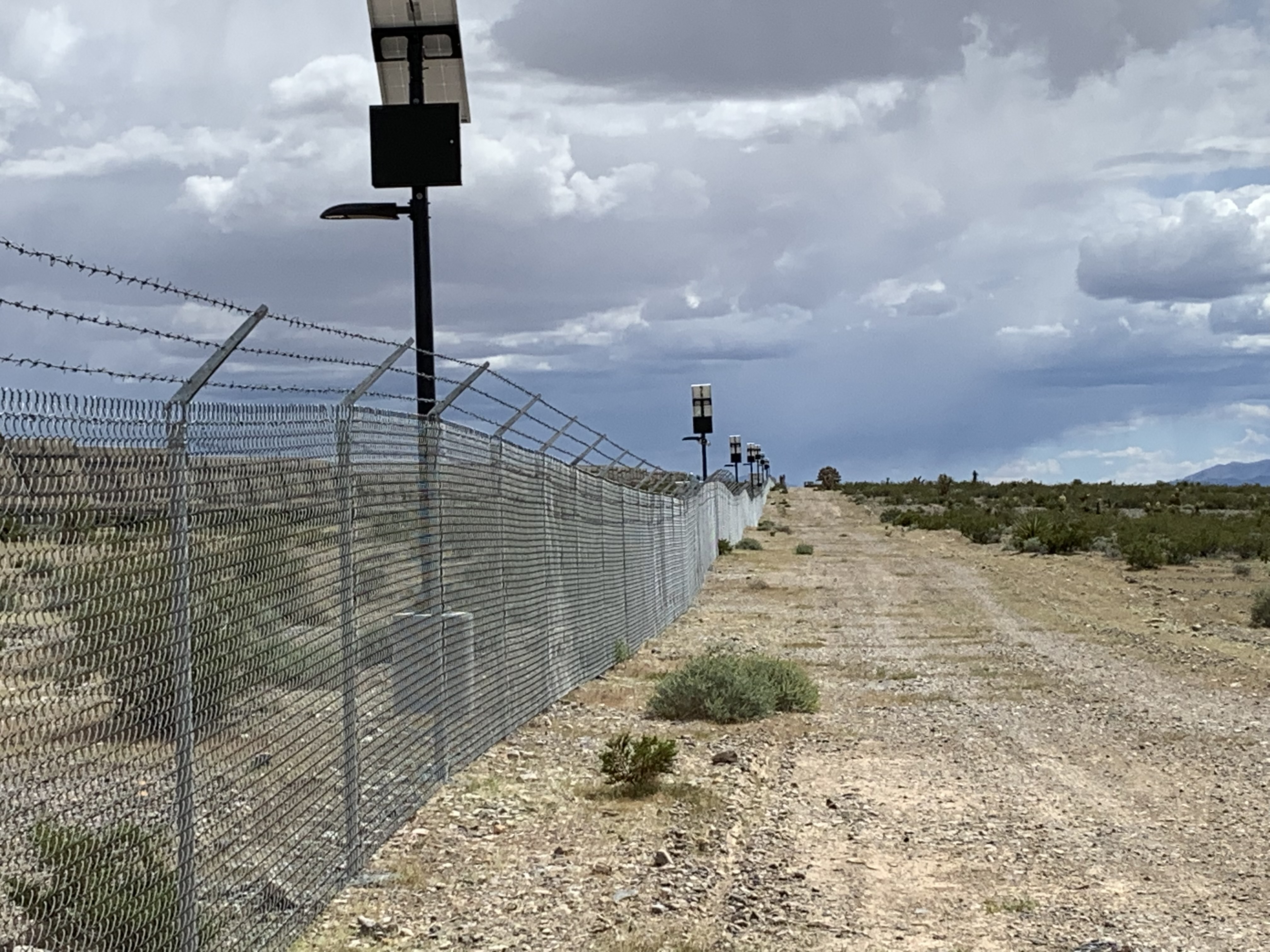
^Impacts to the desert include no access, habitat fragmentation, new perimeter road-building, and night-lights (which will light up the dark night skies).
Disturbance, Habitat Degradation, Industrialization
But on our visit in April of 2019, we saw impacts to this delicate Mojave Desert ecosystem that are unacceptable. Desert wildflowers were not blooming in the disturbed ground and unnatural shade of the solar pensls. Large areas of ground were still graded for lay-down areas, and roads cut into the fragile biological soil crust. Trampling and ground breakage was still apparent over the ungraded desert areas.
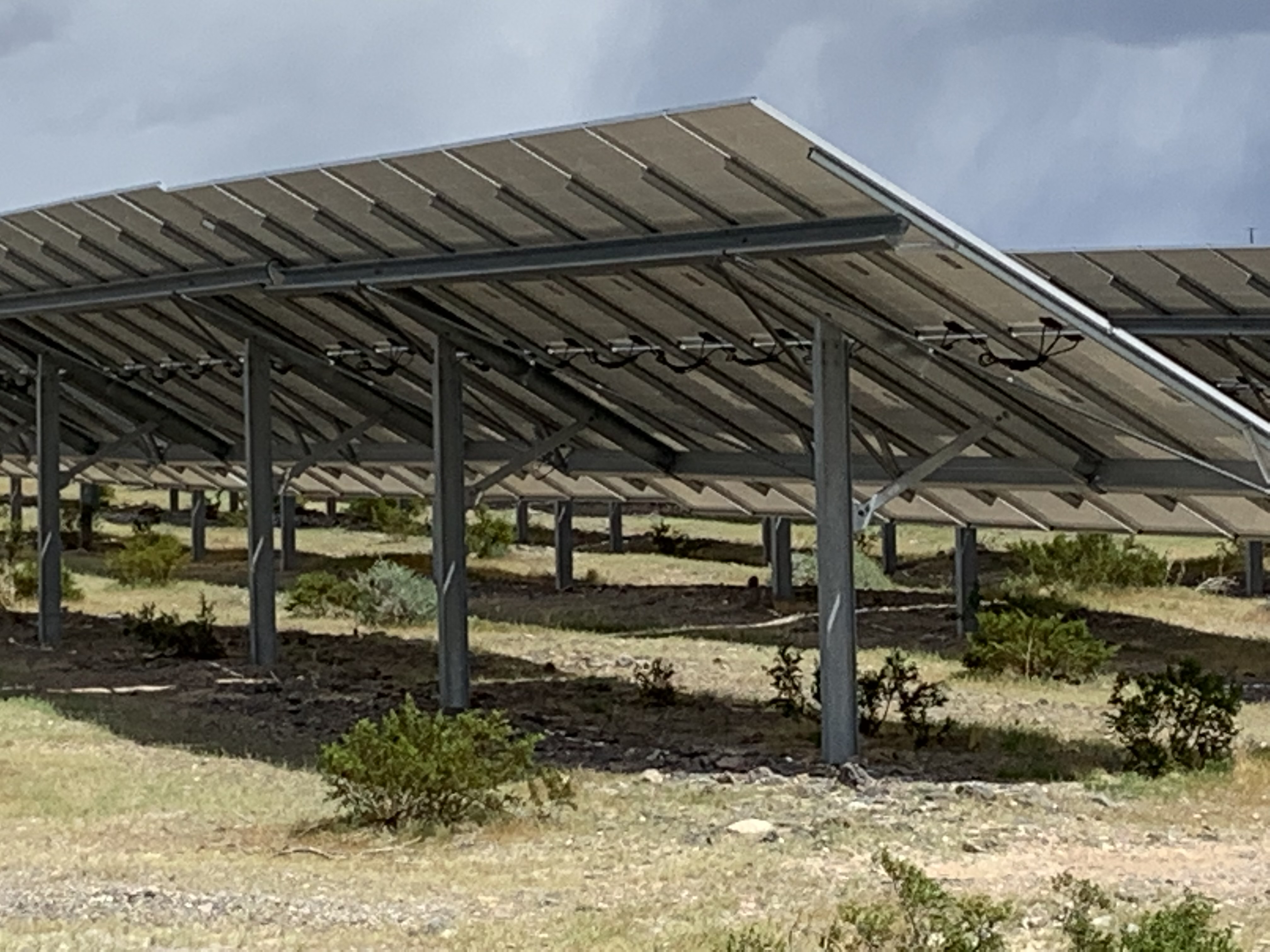
^Trampled and disturbed ground, with mowed creosote.
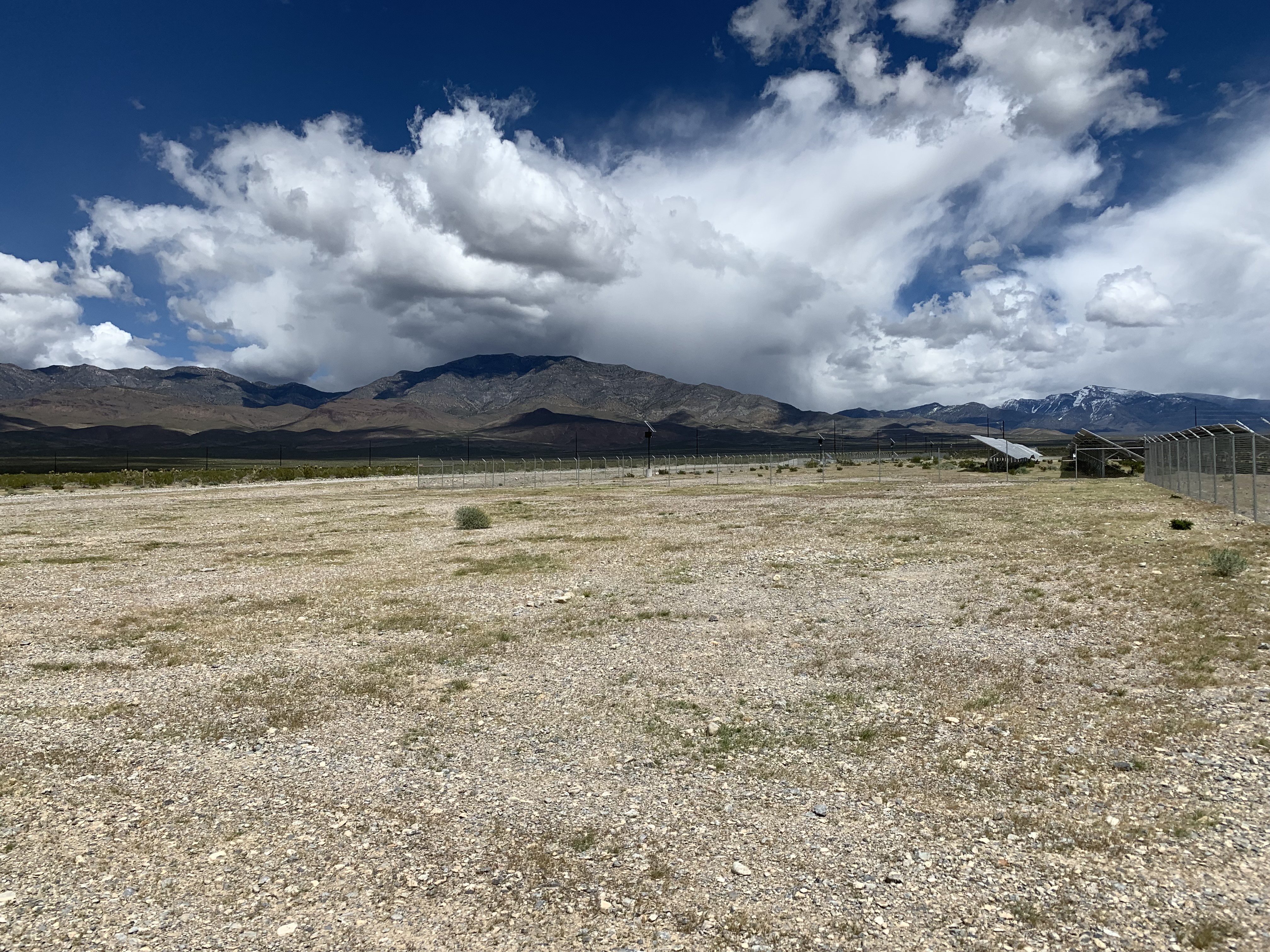
^Graded laydown area used for materials laydown during construction. There has been no attempt to restore or replant this habitat.
Plus, the chainlink fence topped with barbed wire cuts off access to the desert for recreational users, and larger desert animals such as bighorn sheep. Even with all these mitigations, the desert here is fragmented, disturbed, and degraded.
The disturbed ground under the solar panels was carpeted with invasive splitgrass and red brome.
Worst of all, the tall Joshua trees and Mojave yuccas were bulldozed off the site and piled up like rubbish next to the solar project. We found a pile of mature Joshua trees piled up and left to die, to make room for the solar projects. The Joshua tree (Yucca brevifolia) gets a lot of attention when they are damaged or drought-killed in Joshua Tree National Park, and one group has petitioned the species for listing under the Endangered Species Act. Why not conserve this unique tree in other parts of its range?
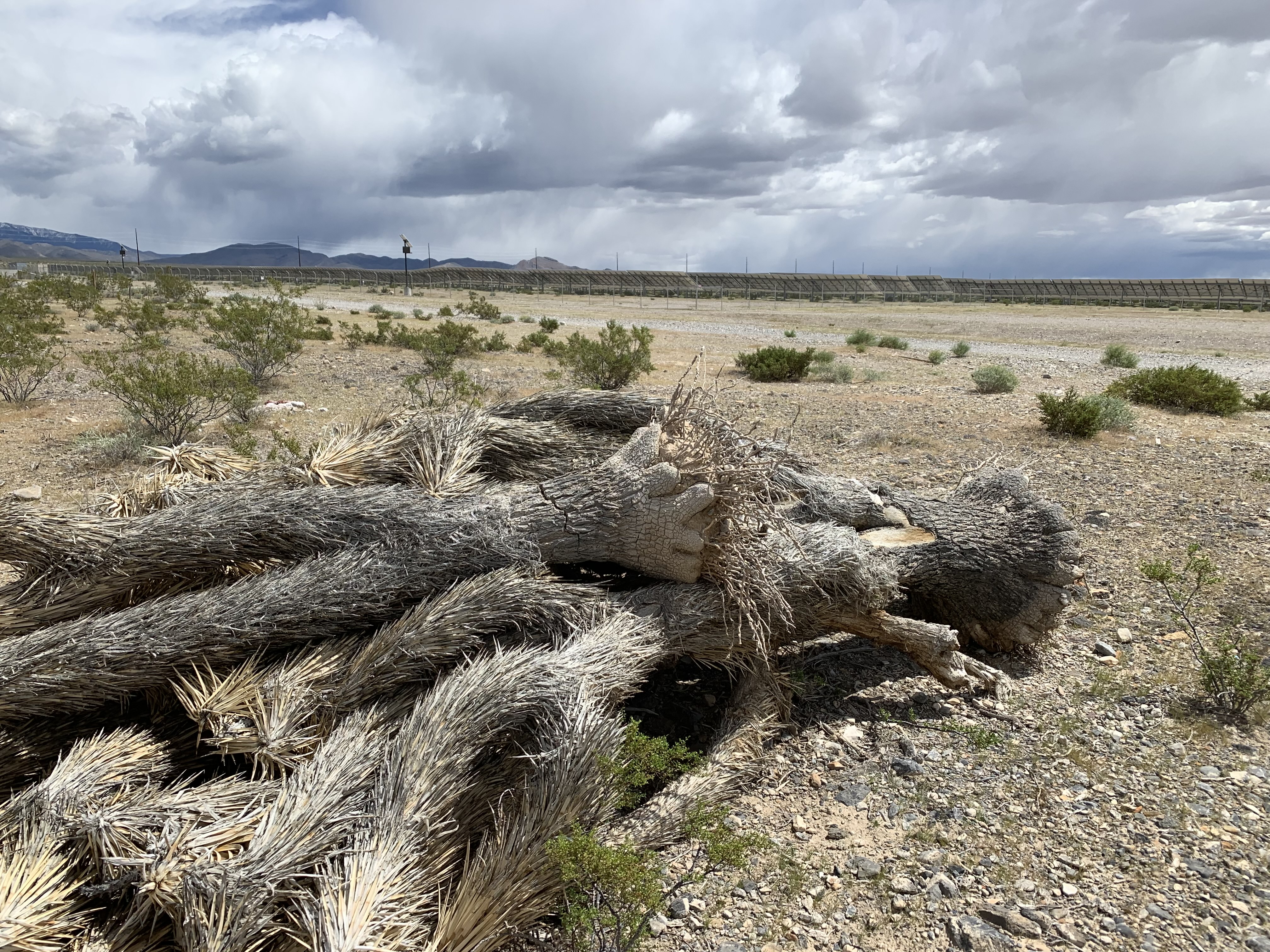
^Joshua trees bulldozed down to make room for the solar project, and left as garbage on the side of the road. You can see the solar project in the distance. The developers did not even try to transplant these desert icons.
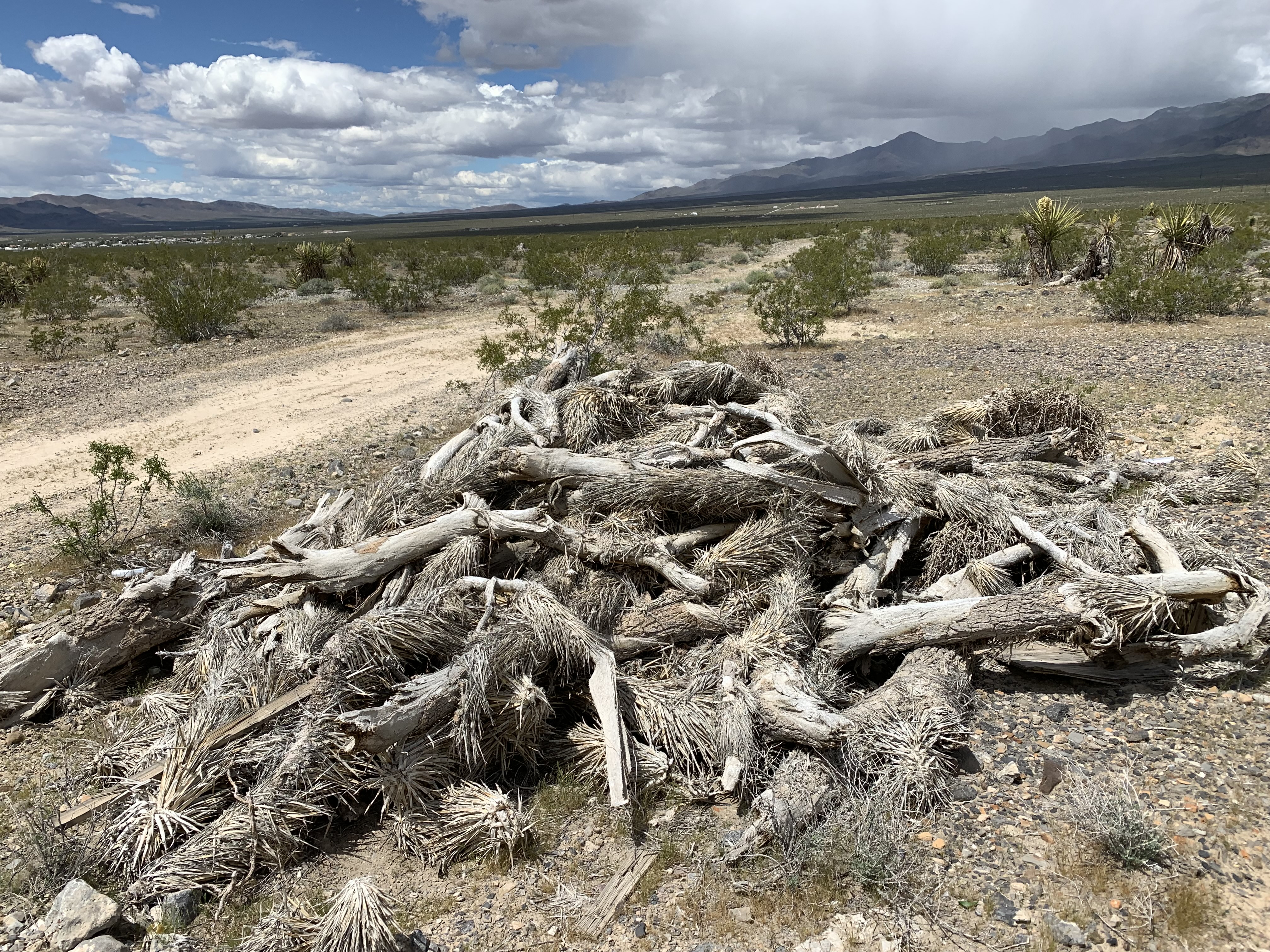
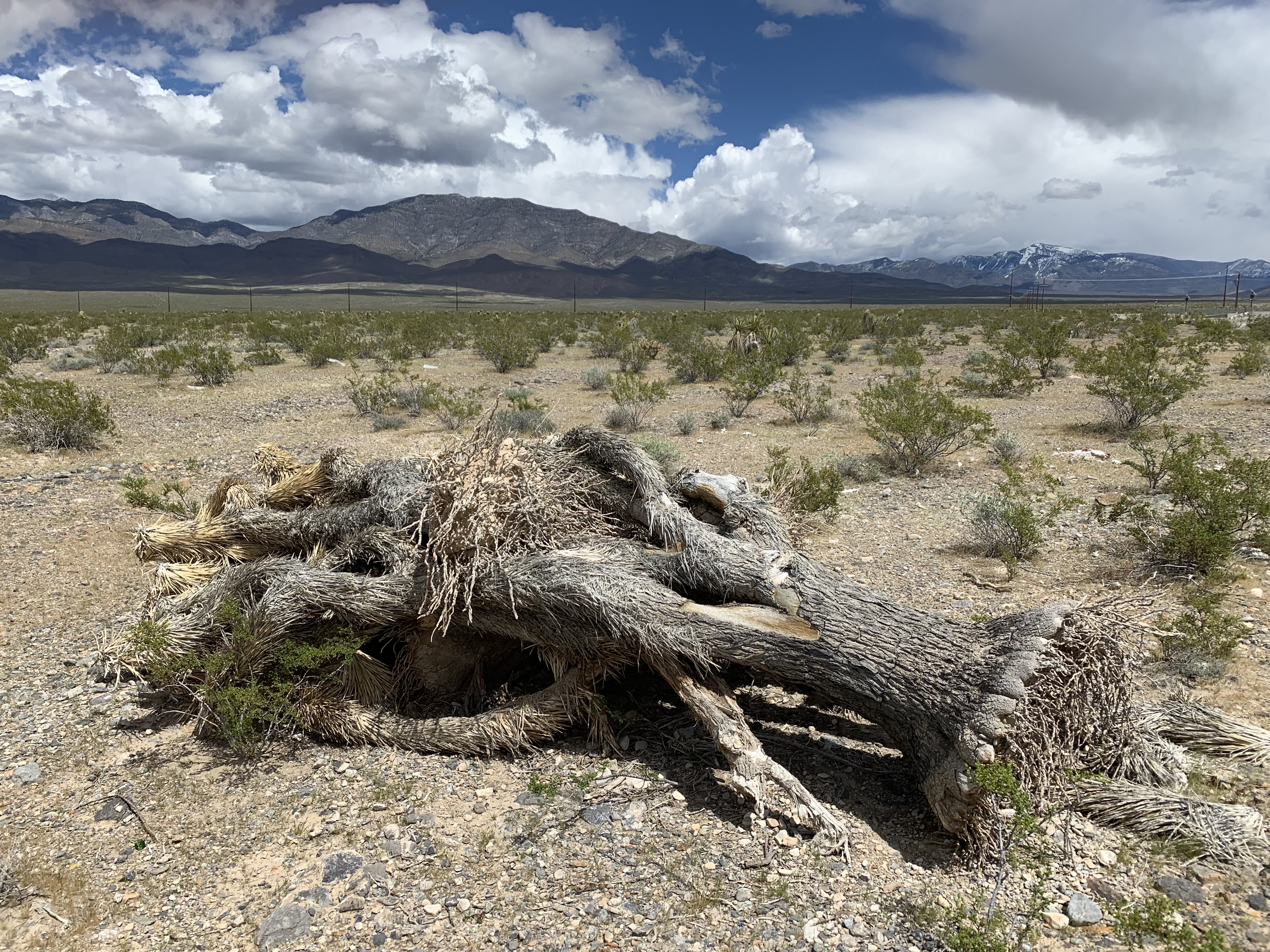
^Is this utility-scale solar development mitigation?
The wavy solar panel rows to us still look like a lake (now with 'waves') from a distance, so we'd like to see more data on bird mortality before we agree this is a workable avian-solar mitigation measure.
The Adjacent Undisturbed Mojave Desert
Blooming Mojave yuccas, creosote-bursage shrub habitats, cacti, biological soil crusts on limestone soils, with no roads or artifical shade. This is home to tortoises, burrowing owls, kit foxes, wildflowers, and biodiversity that needs to be conserved. Solar Panels should go on rooftops and over parking lots.
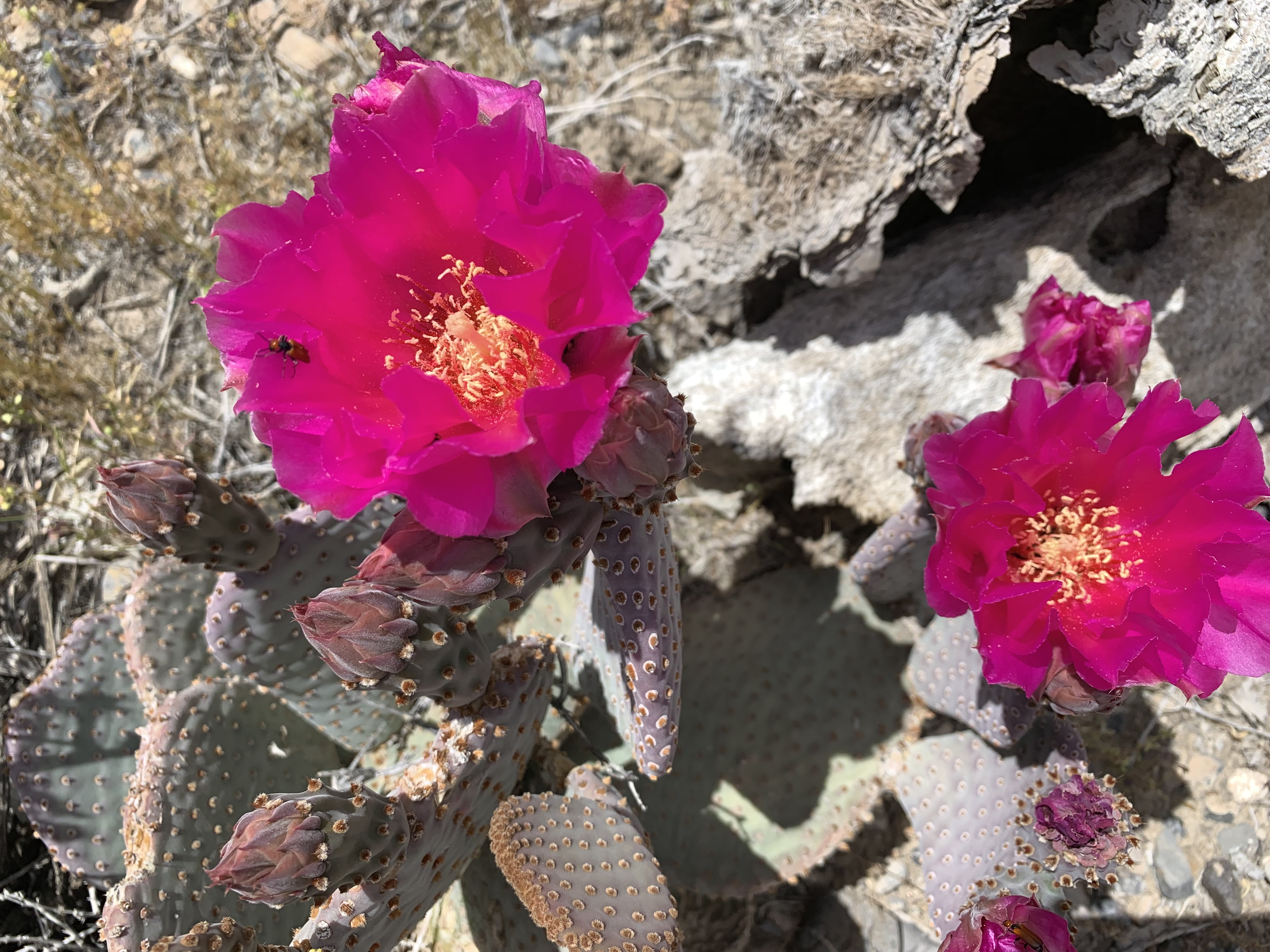
^Flowering beavertail cactus (Opuntia basilaris), outside the Pahrump Solar project site. Look at that native pollinator beetle on the bloom. These cacti need full sun, they are not adapted to shade.
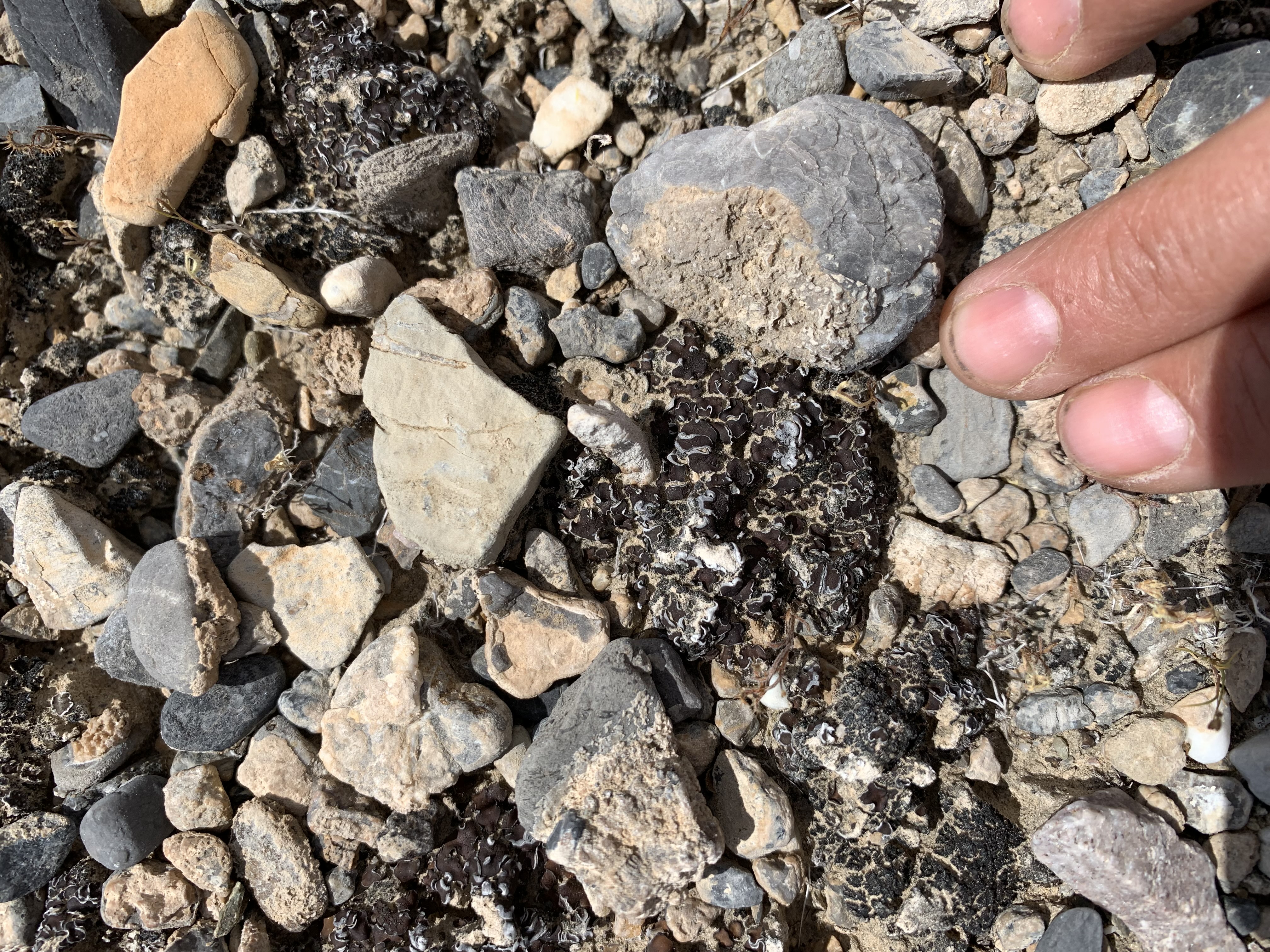
^Biological soil crust on the limestone alluvial gravels next to the solar project. These consist of liverworts, lichens, algae, and moss. These living crusts extend below the ground surface and sequester carbon. They are killed when driven over and the ground trampled during construction projects. We saw no biological soil crusts in the solar field.
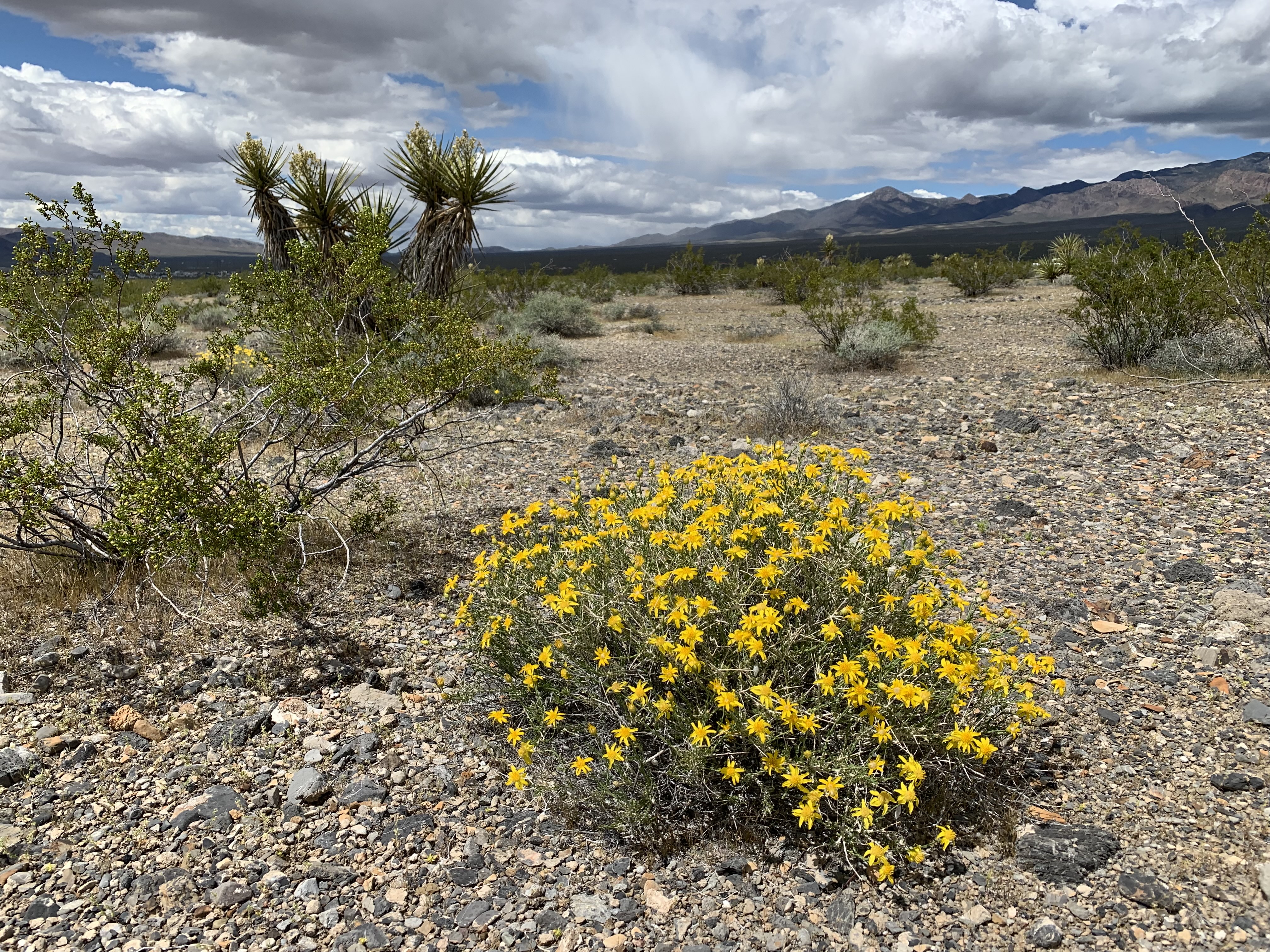
^Undisturbed Mojave Desert next to the solar project, in Pahrump Valley next to the Spring Range. Creosote, Mojave yucca, and yellow-flowering goldenbush grow here in full sun.
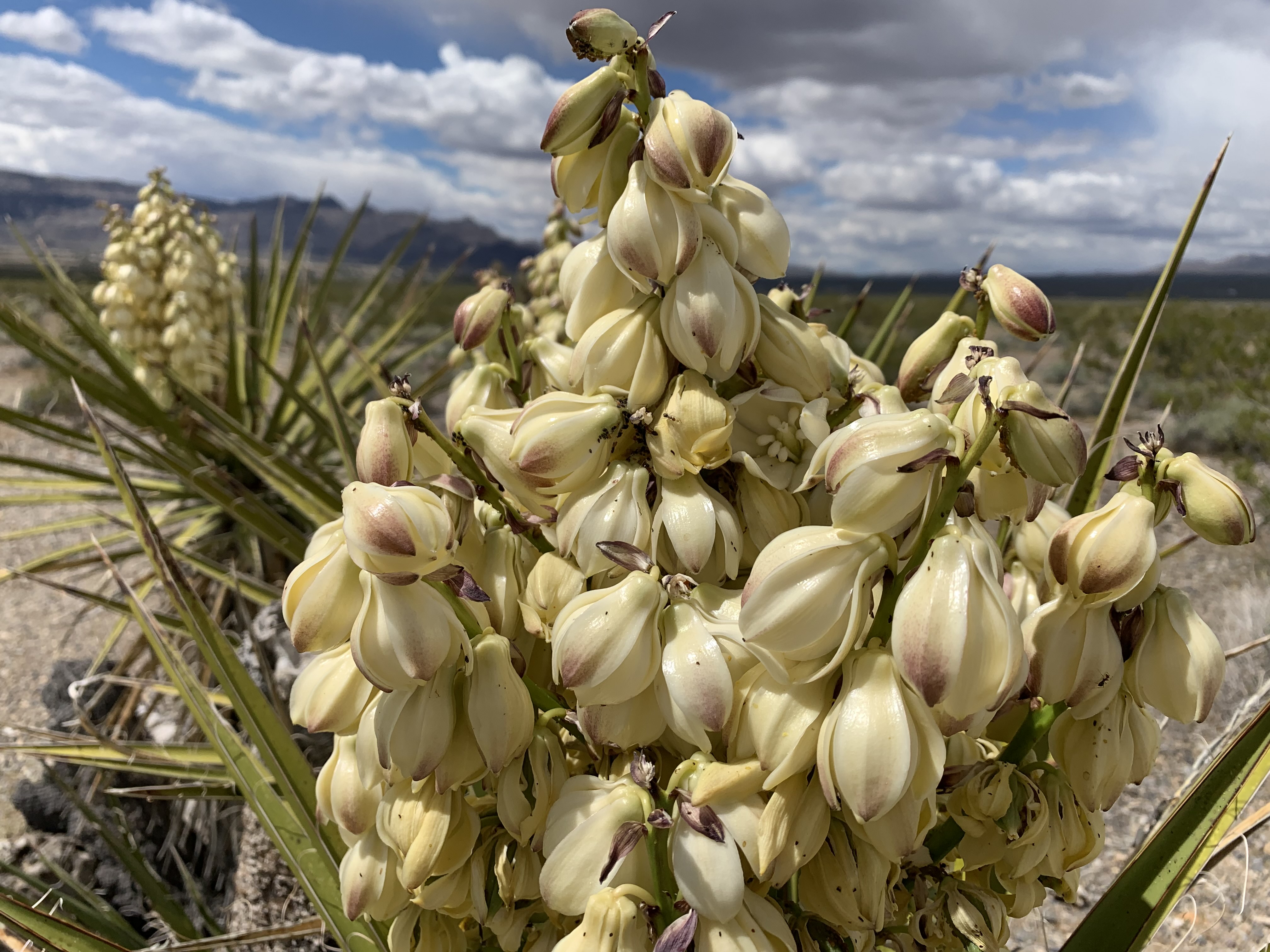
^Mojave yuccas are too tall to allow them to stay in the solar field, so they were bulldozed down and removed. This blooming yucca was right outside the fence.
